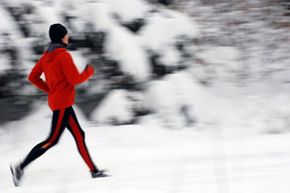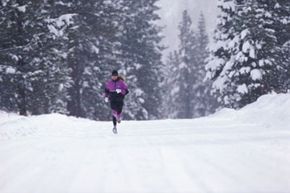There's nothing like a good run on a nice, crisp, sunny day. When the weather is perfect -- not too hot, not too cold -- your body is comfortable, your breathing is easy, and the sun feels warm on your face. These are the days when you love being a runner.
But then winter hits. You lace up your running shoes and go out for your usual morning run, and it's so cold your chest hurts when you inhale, and to top it off, the freezing wind dries out your skin. If you're like many people, these cold winds drive you indoors to your trusty treadmill. But running in place on a machine just isn't the same. You long to get back outside to your regular route, but you can't stand the cold. It's probably best to sit on the couch and put on some winter weight, right?
Advertisement
Wrong. You can enjoy running during the cold winter season if you take some simple precautions. Here's a list of things that can happen if you run in the cold without proper planning:
- hypothermia
- frostbite
- dehydration
- wind chill effects
These are all serious and, in some cases, potentially life-threatening conditions. However, if you take some extra time to get ready for your run in the cold, you'll be safe and comfortable.
Later on we'll talk about dressing for warmth, protecting your exposed skin and keeping hydrated. But first, let's talk about your route. You may not be able to run the same route in the winter as you do during the warmer months because it could be snow-covered or icy. So map out an alternate route, if necessary. Keep your route closer to home and maybe even a bit shorter. If you're closer to home, you won't have far to run or walk if the weather gets ugly or if you take a spill on the ice.
And do remember that sometimes it's just too cold to run. Medical professionals recommend you run for no more than 30 minutes in temperatures below 0 degrees Fahrenheit (minus 17.7 degrees Celsius), and here's why: You have a decreased ability to feel pain in sub-zero temperatures, meaning if you injure yourself, or if you have a previous injury that flares up, you may not feel it and can wind up exacerbating the problem.
On the next page, find out how to dress for cold weather running.
Advertisement




